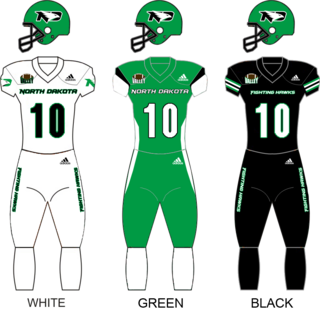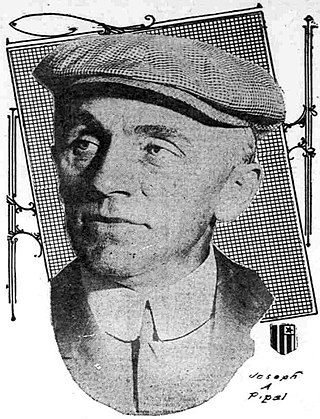Related Research Articles

Hand County is a county in the U.S. state of South Dakota. As of the 2020 census, the population was 3,145. Its county seat is Miller.

Morton County is a county in the U.S. state of North Dakota. As of the 2020 census, the population was 33,291, making it the sixth most populous county in North Dakota. Its county seat is Mandan. Morton County is included in the Bismarck, ND, Metropolitan Statistical Area.

The University of South Dakota (USD) is a public research university in Vermillion, South Dakota. Established by the Dakota Territory legislature in 1862, 27 years before the establishment of the state of South Dakota, USD is the flagship university for the state of South Dakota and the state's oldest public university. It occupies a 274 acres (1.11 km2) campus located in southeastern South Dakota, approximately 63 miles (101 km) southwest of Sioux Falls, 39 miles (63 km) northwest of Sioux City, Iowa, and north of the Missouri River.

Dakota Wesleyan University (DWU) is a private Methodist university in Mitchell, South Dakota. It was founded in 1885 and is affiliated with the United Methodist Church. The student body averages slightly fewer than 800 students. The campus of the university is listed on the National Register of Historic Places.

The North Dakota Fighting Hawks represent the University of North Dakota, competing as a member of the Missouri Valley Football Conference (MVFC) in the NCAA Division I's Football Championship Subdivision. From 1973 to 2008, they played in the NCAA's NCAA Division II, winning the national championship in 2001. From 1955 to 1972, they competed in the NCAA's College Division where they participated in and won three bowl games.

The North Dakota State Bison football program represents North Dakota State University in college football at the NCAA Division I Football Championship Subdivision level and competes in the Missouri Valley Football Conference. The Bison play in the 19,000-seat Fargodome located in Fargo. The Bison have won 17 national championships and 37 conference championships. They have won nine NCAA Division I AA FCS National Championships between 2011 and 2021. The Bison hold the record for most overall NCAA national championships and the record for the most consecutive championships with five titles between 2011 and 2015 for Division I FCS.

Joseph Amos Pipal was an American football, basketball, and track and field coach. He served as the head football coach at Doane College (1902), Huron University in 1905, Dickinson College (1907), the University of South Dakota (1910), Occidental College, and Oregon State University (1916–1917), compiling a career college football record of 50–35–3. Pipal was credited with devising lateral pass and mud cleats for football shoes and in 1934 wrote a book titled The lateral pass technique and strategy.

The 1914 Nebraska Cornhuskers football team represented the University of Nebraska in the 1914 college football season. The team was coached by fourth-year head coach Ewald O. Stiehm and played its home games at Nebraska Field in Lincoln, Nebraska. They competed as members of the Missouri Valley Conference. The 1914 season was part of Nebraska's 34-game unbeaten streak that ran from 1912 to 1916.

The Sitting Bull Trophy is the name of the rivalry trophy that was awarded to the winner of the annual football game between the University of North Dakota Fighting Hawks and the University of South Dakota Coyotes. The rivalry stems from the time the two teams spent competing together in the North Central Conference (1922–2007) and later in the Great West Conference (2008–2011).

The South Dakota–South Dakota State football rivalry between the South Dakota Coyotes and the South Dakota State Jackrabbits is a yearly rivalry match-up in football between the two largest public universities in the state of South Dakota: the University of South Dakota in Vermillion and South Dakota State University in Brookings.

The 2015 Montana Grizzlies football team represented the University of Montana in the 2015 NCAA Division I FCS football season. The Grizzlies were led by first-year coach Bob Stitt who took over after 15 years coaching the NCAA Division II Colorado Mines Orediggers. The Grizzlies played their home games on campus at Washington–Grizzly Stadium. Montana participated as a member of the Big Sky Conference, of which they are a charter member. They finished the season 8–5, 6–2 in Big Sky play to finish in a tie for second place. They received an at-large bid to the FCS Playoffs where they defeated South Dakota State in the first round before losing in the second round to North Dakota State.

The 2015 North Dakota State Bison football team represented North Dakota State University in the 2015 NCAA Division I FCS football season. They were led by second-year head coach Chris Klieman. The team, which played its 23rd season in the Fargodome, entered the season as the four-time defending national champions. The Bison have been members of the Missouri Valley Football Conference (MVFC) since the 2008 season.

The Dana J. Dykhouse Stadium is an outdoor college football stadium in the north central United States, on the campus of South Dakota State University in Brookings, South Dakota. It is the home venue of the South Dakota State Jackrabbits of the Missouri Valley Football Conference. The stadium was constructed in phases on the previous Coughlin-Alumni Stadium site and has a seating capacity of 19,340. The field has a traditional north-south alignment at an approximate elevation of 1,620 feet (495 m) above sea level.
The 1913 South Dakota Coyotes football team represented the University of South Dakota as an independent during the 1913 college football season. Led by third-year head coach James Henderson, the Coyotes compiled a record of 3–3.
The 1914 South Dakota Coyotes football team represented the University of South Dakota during the 1914 college football season. In Ion Cortright's first year as head coach, the Coyotes compiled a 5–2–1 record, and outscored their opponents 111 to 75. The Coyotes played a tough schedule, with regional powerhouses Nebraska, Notre Dame, and Minnesota. South Dakota did not manage to win any of these contests, but they did break a 14 game winning streak when they tied Nebraska 0–0 at Lincoln, and would become the Cornhuskers only blemish in a 34 game stretch from 1912 to 1916.
The 1915 South Dakota Coyotes football team represented the University of South Dakota during the 1915 college football season. In Ion Cortright's second and final season at South Dakota, the Coyotes compiled a 4–2–2 record and outscored their opponents 86 to 39, not allowing a single point in their final four contests.
The 1917 South Dakota Coyotes football team represented the University of South Dakota during the 1917 college football season.
The 2022 South Dakota Coyotes football team represented the University of South Dakota in the 2022 NCAA Division I FCS football season. The Coyotes competed as members of the Missouri Valley Football Conference and were led by seventh-year head coach Bob Nielson. They played their home games at the DakotaDome in Vermillion, South Dakota.

The 2022 North Dakota State Bison football team represented North Dakota State University as a member of the Missouri Valley Football Conference (MVFC) during the 2022 NCAA Division I FCS football season. The Bison were led by fourth-year head coach Matt Entz. They played their home games at the Fargodome in Fargo, North Dakota.
The Bison finished their regular season with an overall record of 9–2 and 7–1 in MVFC play. NDSU received the number 3 overall seed in the FCS playoffs. The Bison then beat Montana in the second round, Samford in the quarterfinals, and Incarnate Word in the semifinals, before falling to topseed and archrival South Dakota State in the FCS National Championship. This was the program's first loss in the FCS title game, and only their third ever loss in a title game at any level.
References
- ↑ "South Dakota Game by Game Results". September 5, 2015. Archived from the original on September 5, 2015. Retrieved June 29, 2020.
- ↑ "South Dakota vs Notre Dame Box Score, November 11, 1916".